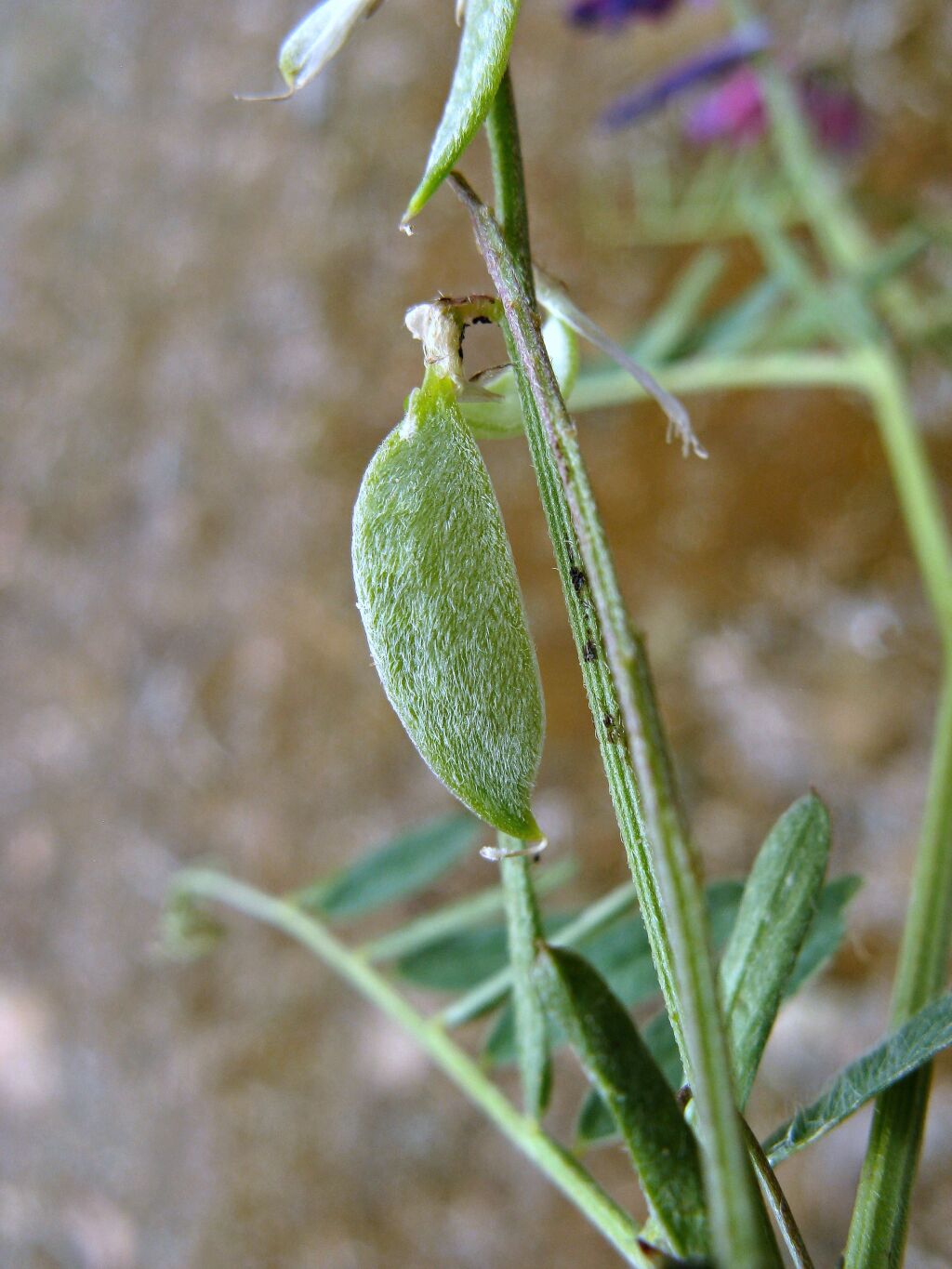Vicia villosa
Roth Russian VetchClimbing or procumbent, annual or biennial herb; stems to 2 m long, angular. Leaves 5–11 cm long excluding the often pinnate tendril; leaflets 4–24, linear, oblong or elliptic, 5–35 mm long, 1–8 mm wide, pubescent to glabrous; stipules semi-sagittate, 8–10 mm long, entire. Flowers 2–40, pedunculate; peduncle 3–10 cm long; pedicel c. 1 mm long; calyx campanulate, 5–10 mm long, villous or sparsely pubescent, base gibbous, teeth linear-subulate, unequal, shorter or longer than calyx tube; corolla 10–20 mm long, violet, purple or blue; standard obovate, emarginate, hardly longer than wings, limb shorter than claw; wings sometimes white or yellow; keel shortest, dark-tipped. Pod oblong, 2–4 cm long, 6–12 mm wide, compressed, brown, glabrous or pubescent; seeds 2–8, subglobose, 3–4 mm long, compressed, brown or black.
LoM, MuM, Wim, GleP, VVP, VRiv, EGL, HSF.
A highly polymorphic species with 4 subspecies recognized currently (Wiersema et al. 1990), 2 in Victoria.
Jeanes, J.A. (1996). Fabaceae. In: Walsh, N.G.; Entwisle, T.J., Flora of Victoria Vol. 3, Dicotyledons Winteraceae to Myrtaceae, pp. 663–829. Inkata Press, Melbourne.
 Spinning
Spinning



